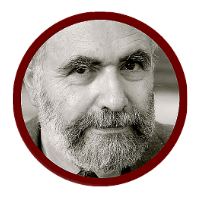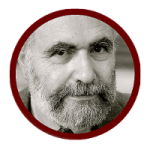Most General Assembly and Security Council resolutions absurdly deny Israel’s rights to Jerusalem ; President Trump’s policy is to get rid of this denial once and for all.
President Donald J. Trump’s decision to recognize Jerusalem as the capital of Israel and transfer the American Embassy there was rejected by many countries, including democratic Western countries who claim to be friends of both the United States and the Jewish State. On December 21, 2017, the United Nations General Assembly voted by a wide margin – 128 members-States out of 193 – a resolution drafted by Turkey and Yemen demanding that « all States comply with Security Council resolutions regarding the Holy City of Jerusalem, and not recognize any actions or measures contrary to those resolutions ». Most General Assembly and Security Council resolutions deny Israel’s rights to Jerusalem ; President Trump’s true policy is to get rid of this denial once and for all, and especially to repell whatever commitment or acquiescence it may have enjoyed from the United States in the past.
One sould neither worry too much about nor be surprised by the December 21 resolution as such (known as Resolution ES-10/ L.22 in UN parlance). Under the United Nations Charter, the United Nations General Assembly’s resolutions carry no practical weight ; all the more so when they target the United States, one of the Security Council’s five permanent and right of veto provided members. As for the moral authority of the General Assembly, where all member-States are deemed to be equal, it has sunk abysmally over the years. Some two thirds of the United Nations member-States, as of today, are either non-democratic or non-functional ; they shouldn’t qualify under the Charter or even according to the most basic definition of a polity. The larger this non-democratic and non-functional majority, the harder it sticks to a crude, binary, anti-American, anti-Western and anti-Israeli narrative. For the record, Turkey, the December 21 resolution’s first sponsor, has turned over the past decade into a semi-dictatorship with an nationalistic-Islamic and anti-Western agenda (while still a member of Nato and an associate of the European Union). Yemen, the second sponsor, is under the present circumstances an utterly non-functional State.
What is truly problematic is the Western democracies’ stand. The December 21 resolution was approved, inter alia, by Europe’s three major countries : Germany, France and the UK. President Emmanuel Macron of France regretted that, as a result of President Trump’s move, the United States was « marginalized ». Some major Western democracies – Canada, Australia, the Czech Republic, Argentina, Colombia, and others – abstained in the vote : none opposed the resolution.
As a rule, Western democratic governments should give more credit to a fellow Western democratic governement, in policy matters, than to a coalition of anti-Western governments or non-governments. They should know that under international law, sovereign countries are entirely free to extend recognition to other countries and to acknowledge any city as the seat of a recognized foreign governement. They should recall, conversely, that the United Nations, under its Charter, is not a World Government superseding its individual member-States, but rather a free association of sovereign States, and has accordingly no right whatsoever to infrige a sovereign State’s decisions. They should have paid attention to the actual wording of President Trump’s decision on Jerusalem, which does not preclude the ultimate status of Jerusalem, nor a mutually agreed settlement between Israel and its neighbors about borders or administration sharing in the Jerusalem area.
Last but not least, they should have given some thought to the crux of the matter. Most Western democracies, including the EU countries, have solemnly acknowledged that anti-Zionism – a systematic, demonizing, hostility towards Israel – is a variation of anti-Semitism and must be fought as such : they fail however to acknowledge that the United Nations narrative on Israel, as it has been worked out over the years, including most of the UN resolutions on Jerusalem, clearly pertains to both anti-Zionism and anti-Semitism, and as such runs both against the United Nations Charter and they own policies ; likewise, they fail to realize that President Trump’s policy precisely aims to end this narrative and replace it by a fairer and more productive approach.
Israel’s case on Jerusalem is overwhelming. The Jewish people’s special relation to the Holy Land and thus to Jerusalem was implicit in the Balfour Declaration of November 2, 1917, and in the various ensueing documents that refered to it, including the San Remo Conference Resolution of April 25, 1920, and the Joint Resolution of the United States Congress of September 21, 1922. It was explicitly recognized by the British White Paper on Palestine of June 3, 1922, and, more compellingly under international law, by the third paragraph of the preamble to the League of Nations Mandate for Palestine of July 24, 1922 : « Whereas recognition has thereby been given to the historical connection of the Jewish people with Palestine and the grounds for reconstituting their national home in that country ».
If one is supposed to heed to the Christian or Muslim historical or religious commitment to the Holy Land in general and the Holy City in particular, one is all the more supposed to heed to the Jewish commitment, which is more ancient and more intense. Radical Muslims today deny the bond between Jerusalem and the Jewish people. However, more traditional or more orthodox Muslims recognize it. Interestingly enough, the most common Islamic appellation for Jerusalem is Al-Quds, an abbreviated version of the traditional Hebrew expression Yerushalayyim Ir ha-Qodesh (« Jerusalem the Holy City »). An earlier and more hallowed Islamic name is Bayt al-Maqdis, an even more obvious calque of the Hebrew Beith ha-Mikdash (« The Temple »).
A second consideration is that under international law, Jerusalem was from 1920 to 1948 the capital of Palestine, a territory explicitly carved out of the former Ottoman Levant as a Jewish National Home. The 1947 United Nations plan to partition Palestine between a Jewish Palestinian and an Arab Palestinian State turned Jerusalem, for ten years at least, into a Corpus Separatum (« separate entity ») unrelated to either of the two States. However, since the plan was never more than a plan, even if endorsed by the United Nations General Assembly, was ignored by the Arab side and was never implemented, it is to be held as null and void, the State of Israel as the legitimate successor to Palestine as a Jewish National Home, and Jerusalem as Israel’s legitimate capital – without prejudice to an eventual peace settlement. Whatever the character of the 1993 Israel-PLO arrangement known as the Oslo Accords under international law, it pointedly leaves the Jerusalem issue to a further stage in the peace process, and thus validates, at this stage, Jerusalem as the capital of Israel.
A third consideration is that those nations who recognize the State of Israel, and engage in bilateral relations, do recognize de facto Jerusalem as its capital, since their leaders or representatives go to Jerusalem in order to meet the Israeli leaders or to address the Israeli parliament. Under international law, a de facto recognition is as valid as a de jure recognition, at least as long as the de facto circumstances prevail. In other terms, it is both a gross inconsistency and a breach of the accepted rules in international relations for the many UN members-States who recognize Israel and whose leaders or representatives visit Israel’s leaders and legislators in Jerusalem – a list that would include Germany, France and the United Kingdom – to dismiss President Trump’s decision and support Resolution ES-10/ L.22.
Finally, Israel’s claims or rights to Jerusalem may be based as well on a fourth, and very compelling, consideration : the Holy City has hosted a relative Jewish majority for nearly two hundred years, and an absolute Jewish majority for one hundred and fifty years. The apportioning of territory and the delimitation of borders are indeed intricate matters under international law : they are neither supposed to merely translate the facts on the ground or the local demographics into a settlement, nor to ignore them entirely. However, many territorial disputes were decided by demographically-based self-determination referenda or alternatively by bilateral or multilateral agreements taking in account demographic realities. This is true about cities as well as of extended territories : one precedent is the incorporation of the culturally Italian city of Trieste into Italy under the London Memorandum of 1955 and the Treaty of Osimo in 1975.
In 1845, the Prussian consul, Ernst-Gustav Schultz, conducted the first reliable demographic survey ever of Jerusalem. Out of a global population of 16 410, living mostly in the old, walled, city, he found 7120 Jews, 5000 Muslims, 3390 Christians, 800 Turkish soldiers and 100 Europeans. In other words, the Jews amounted to 43 % of the global population and were the single most populous group.
Twenty-three years later, in 1868 – about the time of Mark Twain’s famous journey to the Mediterrean Holy Land, narrated in The Innocents Abroad -, the Jerusalem Almanack, a publication intended for Western visitors, divided evenly the population between Jews (9000 inhabitants out of 18 000) and non-Jews (5000 Muslims and 4000 Christians).
During the 1870’s and the 1880’s, Jerusalem started to develop outside Sultan Soliman’s walls, along Jaffa Road to the west, Nablus Road to the north and Jericho road to the east : rings of new neighborhhods were built, as well as many public facilities. While the city took a more pronounced Christian character in the process (the most impressive among the new buildings were churches, convents or hospitals funded by the Catholic, Orthodox and Protestant powers), its demographic expansion was essentially a Jewish thing : in 1889, there were 25 000 Jews out of 39 175 inhabitants, (63 % of the global population), against 7115 Christians (18,1 %) and 7000 Muslims (17,8 %).
The growth of Jerusalem as a chiefly Jewish-inhabited city was exponential until WW1. As noted by Martin Gilbert, « the population of Jerusalem nearly doubled between 1889 and 1912 ». And the Jewish population almost tripled.
One of the most revealing sources in this respect is the 750 pages thick Guide de Terre Sainte (Guide to the Holy Land) published in the early 20th century by Father Barnabé Meistermann, a French Franciscan friar, under the aegis of the Custody of the Holy Land : such a monument of religious, historic and artistic erudition, and such a detailed, practical, report on the various countries to be visited (the Holy Land proper, that is to say present day Israel and Jordan, as well as Italy, Egypt, Lebanon, Syria, Asia Minor and Constantinople), with no less than 40 full country or city maps, 110 sketches outlines of buildings or shrines, and dozens of charts, that it was seen as authoritative even among non-Catholics. The copy I am fortunate to own originally belonged to Julien Weill, the Chief Rabbi of Paris from 1933 to 1950.
According to the Guide’s first edition, published in 1907 and quoted by Gilbert in Jerusalem, Illustrated History Atlas, there were 40 000 Jews in Jerusalem out of 58 900 inhabitants (67 %), against 10 900 Christian Arabs (18,5 %) and 8000 Muslim Arabs (13,5 %).
An updated edition was about to be released in 1914, when WW1 broke out. It was suspended for the duration of the conflict and then edited to take in account the geopolitical reset : the fall of the Ottoman Empire and the end of eight hundred years of Muslim control in Jerusalem and the Biblical area. As Father Meistermann euphemistically noted : « We are far from being upset by the delay… since the Allied conquests have brought about many important changes that translate into unexpected facilities for the pilgrims, either in their travels from Europe to Palestine or in their journeys, whatever the season, throughout a country replete with grand Biblical memories ».
Eventually, the second edition was published in 1923. Regarding the population of Jerusalem, Meistermann quotes the latest prewar survey, conducted by the German statistician Davis Trietsch in 1910, who was soon to serve as military statistician for the Imperial German Army headquarters in Turkey during WW1. Trietsch determined that there were 62 000 Jews out of 92 000 inhabitants (67 %) against 17 000 Christians (18,4) and 13 000 Muslims (14,1 %).
The early 20th century Jewish-Arab ratio (about two thirds against one third) has been valid to this day, broadly speaking, in spite of a strong demographic growth on the one hand, and repeated episodes of violence on the other hand : riots and pogroms against Jews, wars, terrorism, forced migrations of both Jews and Arabs.
In 1944, according to a British census, there were 97 000 Jews in Jerusalem out of 156 980 inhabitants (61,7 %) ; in 1967, when the city was reunited under Israeli rule, 195 700 Jews out of 263 307 inhabitants (74,3 %) ; in 2017, 564 897 Jews, out of 882 652 inhabitants (64 %).
If one is to consider Jerusalem as a metropolis – a set of contiguous cities – rather than a municipality, the ratio is no less valid. The global population of a « greater Greater Jerusalem » that would include, in addition to the present Israeli municipality of Jerusalem, the pre-1967 Israeli municipalities of Mevasseret Zion, Motza Ilit, Tzova, Even Sapir, Ora, Abu Ghosh, Maaleh Hachamishah, and the post-1967 Israeli municipalities of Maaleh Adumim, Pisgat Zeev, Gilo and the Gush Etzion area, as well as the Palestinian Authority municipalities of Ramallah, Birah, Abu Dis, Bayt Jalla, Bayt Sahur and Bethleem – would be of roughly 1,2 million in 2018. The global Jewish population would then be 764 000 (63 %), and the global Arab population 450 000 (37 %).
Alternatively, there would be a bit more than 1 million inhabitants in a « lesser Greater Jerusalem » encompassing only the present Israeli municipality and the pre-1967 or post-1967 Israeli municipalities laying outside its borders : 764 000 Jews (72 %) and 300 000 Arabs (28 %).
The demographic strength of Jerusalem Jews, in absolute terms as well as in relative terms, is the result of both migratory influxes (including immigration from foreign countries) and high birthrates (especially among the Orthodox and Ultra-Orthodox communities). The demographic resilience of Jerusalem Arabs rests on similar trends : migratory influxes on the one hand (immigrants from other Middle Eastern countries until 1947, refugees from other parts of Palestine after the 1948 war, economically or politically induced rural exodus from the Arab Palestinians villages and semi-nomadic Beduin tribes in the West Bank from the 1950’s on) ; high birthrates on the other hand.
The main change, from the British conquest in 1917 to 2017, occured within the Arab population of Jerusalem. While Christian Arabs outnumbered Muslim Arabs until the early 1920’s, they have steadyly declined ever since then. In 2015, there were only 12 400 Christian Arabs in Jerusalem against 307 300 Muslim Arabs (3,8 % of a global Arab population of 319 700 or 1,4 % of the global Jerusalem population). Even in a « greater Greater Jerusalem » metropolis which would encompass the largely Christian municipality of Bayt Jalla and the formerly Christian but now predominantly Muslim municipality of Bethleem, there would not be no more than 30 000 Arab Christians (2,4 %).
This precipitous decline of the Christian population may be ascribed in part to purely demographic factors : unlike the local Jews and Muslims, the local Christians were not significantly reinforced by new arrivals, and tended to lower their own birthrates. A similar process occured in Nazareth, an Israeli Arab city since 1948 : out of 9500 inhabitants in 1922, there were 6500 Christians (68 %) and 3000 Muslims (31 %). Today, the ratio is inverted : out of 75 922 inhabitants in 2016, 52 386 (69 %) were Muslims and 23 549 (30,9 %) were Christians.
However, one must point to a political factor : from 1949 to 1967, the Hashemite Transjordanian and then Hashemite Jordanian government ruling the Arab sector in Jerusalem (the so called East Jerusalem) steadily enforced Islamization policies.
Jews had been expelled to a man from the Jordanian-held Arab sector, including the Old City, during the 1948 war, and their holy sites or synagogues desecrated or destroyed during and after the war. Now it was the turn of the Christians to be forced out – albeit in a more gradual manner. A Jordanian law of 1952 applying to the Arab sector in Jerusalem turned Islam into a State religion and thus reduced Christians to « protected » second class citizens. A second law, in 1953, restricted the Churches’ owning or purchasing of land. In 1955, Christian schools were brought under government supervision and Arabized ; by the same token, Christian students were not allowed to study Islamic matters, and Muslims barred from Christian schools. In 1964, new laws introduced further restrictions to Christian ownership.
Quite naturally, the Arab Christians in the Jordanian-held sector wondered whether they still had a decent future and emigrated en masse. Their numbers dwindled by almost two thirds, from 29 400 in 1944 to 12 646 in 1967. Under the Israeli rule, from 1967 on, their numbers have stabilized but not improved.
Similar hardships were carried on by the Fatah-controlled Palestinian Authority from 1974 on in Bethleem (were the Christian population dwindled from 85 % to less than 20 % today) and in Bayt Jalla (where Christians have still managed to remain a majority).
© Michel Gurfinkiel, 2017
Michel Gurfinkiel, a French public intellectual and editor emeritus of Valeurs Actuelles, is the Founder and President of the Jean-Jacques Rousseau Institute and a Shillman/Ginsburg Fellow at Middle East Forum.


